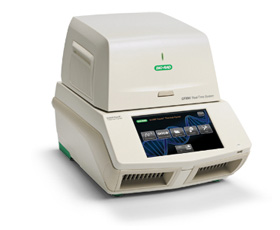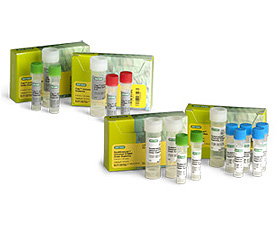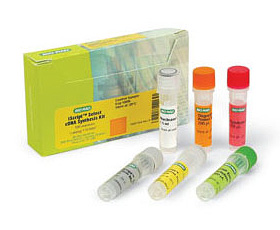Principles and Uses of Multiplex PCR
Multiplex PCR is the simultaneous detection of multiple targets in a single reaction well, with a different pair of primers for each target. This technique requires two or more probes that can be distinguished from each other and detected simultaneously. There is a range of different probe technologies available, all using fluorophores.
Multiplex PCR is used in life science research, clinical diagnostics, and forensic laboratories. The development of PCR detection systems with simultaneous multi-target detection and advances in probe chemistries have made comparative analyses standard in many areas of research and testing. The most common uses of multiplex PCR include:
- SNP genotyping
- Pathogen detection
- GMO (genetically modified organism) detection
- Forensic studies
- Food analysis
- Mutation and polymorphism analysis
- Gene deletion analysis
- Template quantitation
- Linkage analysis
- RNA detection
Advantages of Multiplex PCR
In any laboratory where there are repeated analyses with similar types of samples and the same targets, the benefits of multiplex PCR can be substantial. Advantages of using multiplex PCR include:
- More information with less sample
- Higher throughput
- Cost effective — fewer dNTPs, enzymes, and other consumables
- Time saving
- Less input material required
- More data from limited starting materials
- Increased accuracy of data normalization
- Fewer pipetting errors
Bio-Rad has developed a range of products designed to optimize your real-time PCR assays including instruments, patented reagents, custom and predesigned primers, and fluorescent probes:
- Real-time PCR detection systems with advanced hardware and software features
- Supermixes for PCR and RT-qPCR featuring advanced buffer formulations and patented Ssod7 fusion polymerase
- Wet-lab validated primers guaranteed to perform in compliance with MIQE guidelines
Multiplex PCR Considerations
A major consideration for the successful implementation of multiplex PCR assays is the time and cost of optimization and validation, which may offset savings from higher throughput with multiplexing. Thus, the design and testing of multiplex PCR assays represents an investment. If a laboratory is repeatedly analyzing the same targets, then the advantages far outweigh the initial investment. Until recently, having sufficient template for optimization could be a problem for samples with limited availability. However, the advent of preamplification kits has largely alleviated the problem of restricted sample size.
Primer design for some multiplexed targets can be complex. The primers must have similar melting temperatures, each pair needs to be specific for its target, and none of the primers should form primer-dimers. Additionally, the primer pairs should result in amplification of products of similar size. The usual range is 50–150 bp. Longer products will often be amplified less efficiently and become underrepresented. Most researchers take advantage of in silico design tools to simplify the task of primer design and target selection; a number of these tools are available as free, open-source software.
Some prior knowledge of the relative quantities of the target sequences is advantageous for obtaining accurate results. If one target is much more abundant than another target, then the more abundant target may deplete the dNTPs and effectively outcompete the low-abundance target. This limitation can be overcome by limiting the primer concentration of the very abundant target leading to primer depletion and an earlier plateau. In a sample with unknown abundances, it may be necessary to optimize protocols by testing limiting primer concentrations for each target.
Although multiplex PCR involves optimization and validation, this initial investment is rewarded by the ability to analyze more than one target in a single well or tube and the increased accuracy of comparative analysis and quantitation in research, forensics, and diagnostics.



